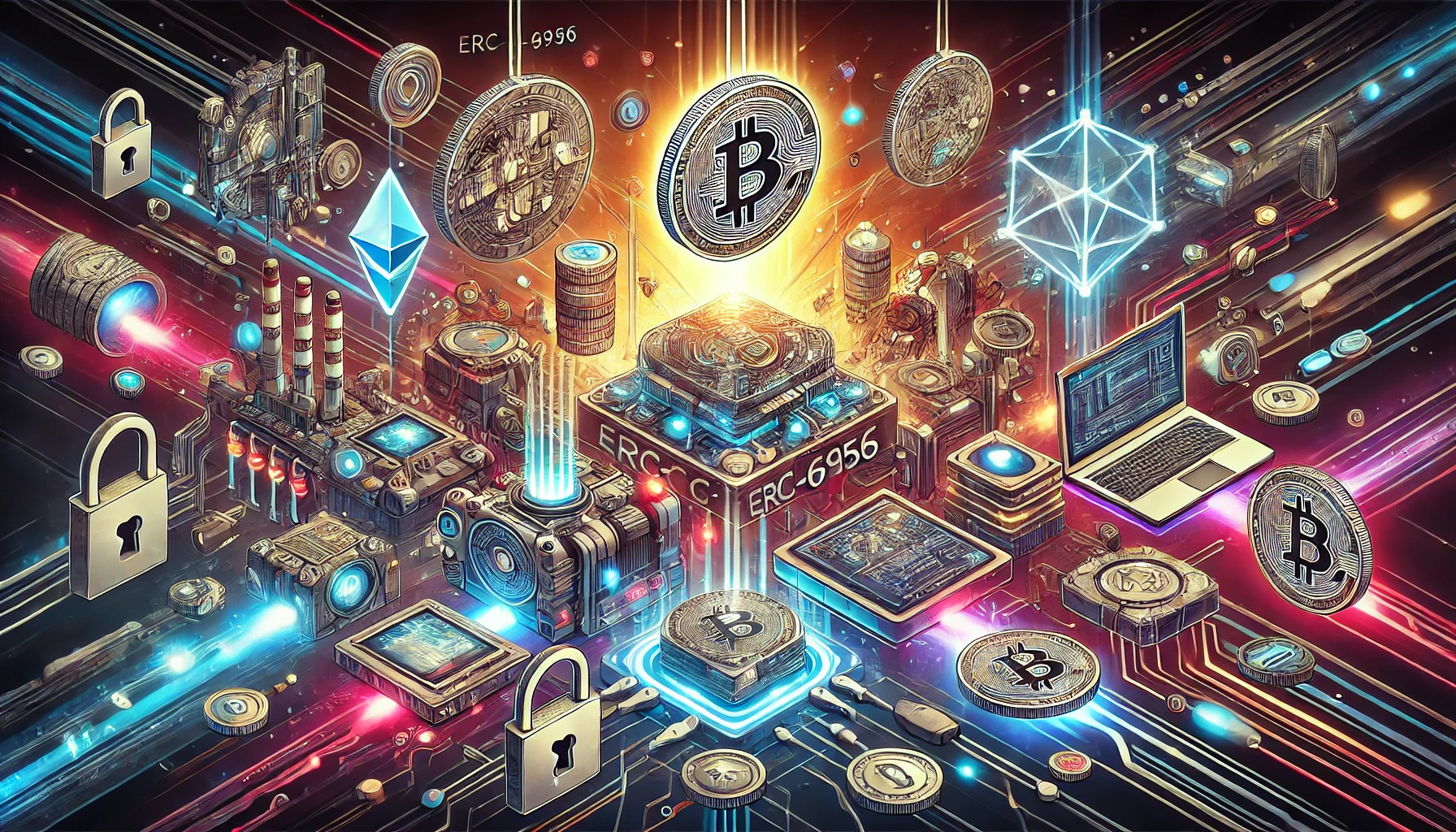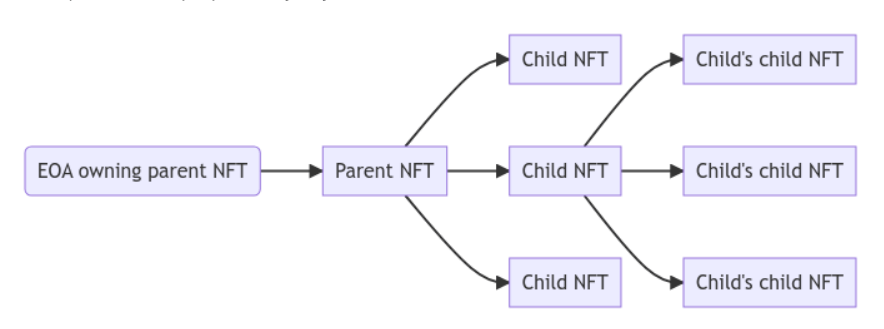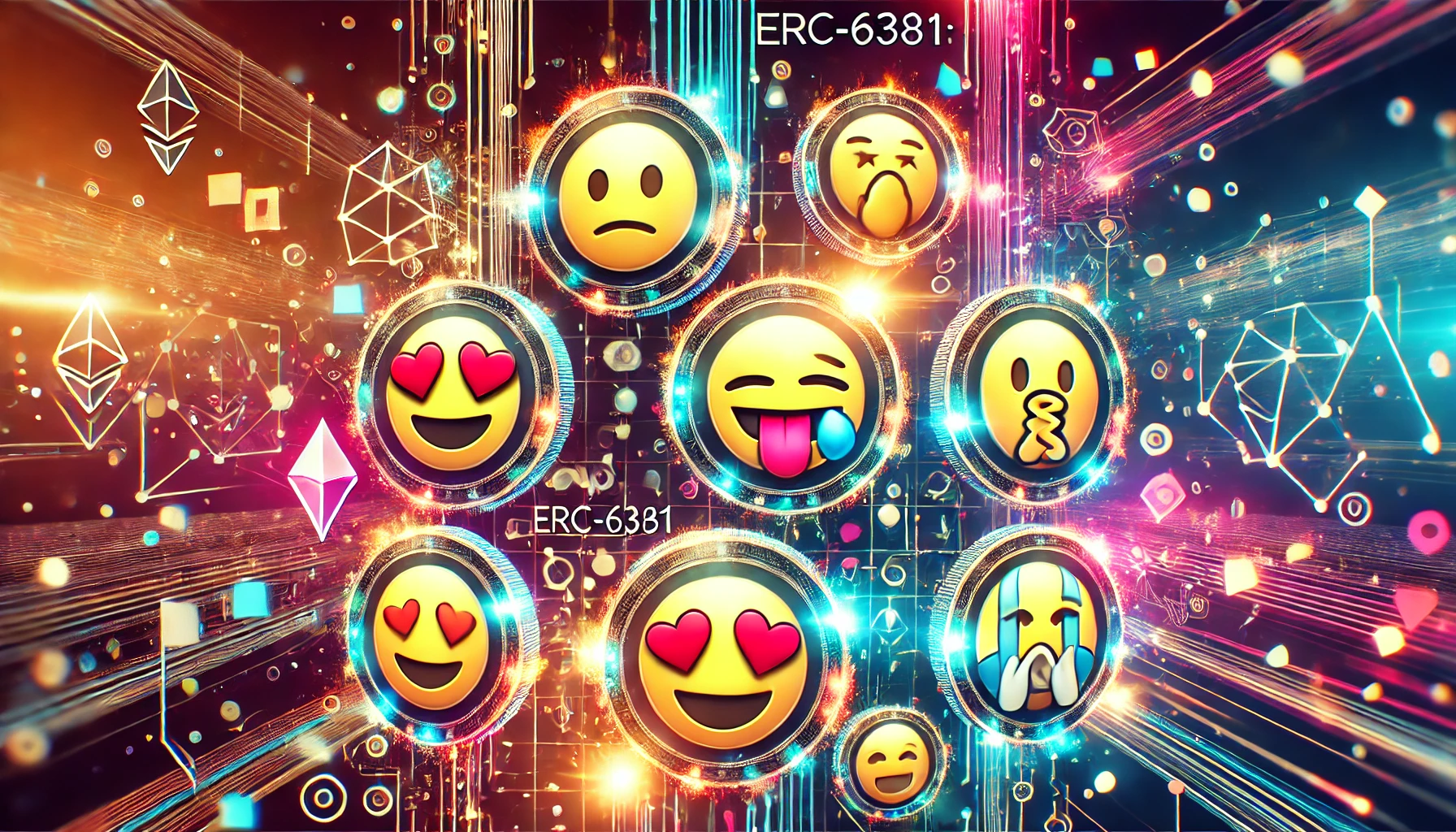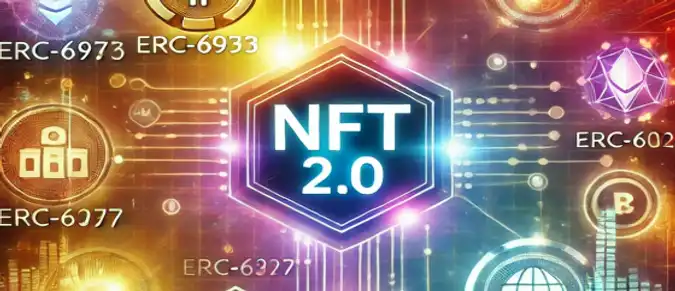Since their inception, non-fungible tokens (NFT) have made a significant impact in the world of digital assets. These unique digital certificates of ownership have found wide applications in various fields, from art and collectibles to gaming and virtual real estate. However, despite their rapid development and popularity, many existing NFT standards face limitations that hinder their further improvement and functional expansion.
In response to these challenges, the Ethereum developer community is actively working on creating new NFT token standards that aim to address existing shortcomings and open up new horizons for the use of these unique digital assets. These innovative standards, such as ERC-6956, ERC-5773, ERC-6059, ERC-6220, ERC-6381, and ERC-6454, offer enhanced interaction, management, and security mechanisms for users and developers.
- ERC-6956: Asset-Bound NFTs
- ERC-5773: Context-Dependent Multi-Asset Tokens
- ERC-6059: Parent-Governed Nestable NFT
- ERC-6220: Composable NFTs
- ERC-6381: Unicode Emojis
- ERC-6454: Minimal Transferable NFT Detection Interface

ERC-6956: Asset-Bound NFTs
ERC-6956, also known as asset-bound NFTs, is a proposed token standard for anchoring a token 1:1 to a physical or digital asset. The standard aims to create a connection between the real world and blockchain, allowing for the tokenization of various assets such as physical collectibles, machine parts, digital assets or even abstract assets like club memberships.
In simpler terms, ERC-6956 is an extension of the popular NFT standard ERC-721, with the added feature of oracle-based authorization, ensuring that token transfers are authenticated by verifying control over the underlying asset.
Potential Use Cases
ERC-6956 provides flexibility in tokenizing different types of assets with various use cases, including but not limited to:
- Physical Collectibles
Assets such as artwork, stamps, or coins can be tokenized, and ownership can be easily transferred on the blockchain. This helps reduce forgery, verify provenance, and make the ownership transfer process more efficient.
- Machine Parts
Tokenizing machine parts allows for decentralized supply chain and inventory management. Tracking and verifying individual components become easier, preventing counterfeit parts from entering the supply chain.
- Digital Assets
Digital assets like in-game items, virtual land, or domain names can be more securely and transparently owned, traded, and verified through the implementation of the ERC-6956 standard.
- Abstract Assets
Club memberships, licenses, or other intangible assets can be represented as tokens, simplifying the issuance, transfer, and management of these assets.
ERC-5773: Context-Dependent Multi-Asset Tokens
ERC-5773, also known as MultiAsset, is designed for NFTs to enable context-dependent output of information. This means that the asset displayed can differ based on how the token is being accessed.
An NFT can possess multiple assets (outputs), which can be any type of file. These assets do not depend on each other. Assets can be ordered at will by the NFT owner but can only be modified, updated, added, or removed when both the token owner and issuer mutually agree.
Potential Use Cases
- Cross-Metaverse Compatibility
The ERC-5773 standard can support various metaverse ecosystems, allowing assets associated with NFTs to be used across different games and platforms.
- Multi-Media Output
An NFT can take on various representations, such as PDF, MP3, or other formats, based on the software or platform being used for e-books or other media types.
- Data Redundancy
To improve metadata resilience and referenced information, duplicate metadata files can be included across different decentralized storage platforms.
- NFT Evolution
Users, minters, or other pre-approved entities can add, remove, or replace assets associated with an NFT.
An example of the capabilities of the MultiAsset standard (ERC-5773) is a cosmetic item for a game that can have multiple attached assets, covering different games and various cosmetic items. As a result, it can evolve into an infinitely useful NFT.
ERC-6059: Parent-Governed Nestable NFT
ERC-6059 introduces the concept of one NFT owning another NFT without the need for an externally owned account (EOA) or a smart contract. This standard extends the basic NFT standard to allow for nesting and a parent-child relationship between NFTs. In simpler terms, an NFT can own and manage other NFTs, creating a hierarchy of tokens.
In the context of ERC-6059:
- A parent token is an NFT that owns another NFT.
- A child token is an NFT that is owned by another NFT.
- An NFT can be both a parent and a child at the same time, resulting in multiple levels of ownership.

The owner of the parent token can manage not only the direct child tokens but also their children, extending the control to multiple levels of hierarchy.
Potential Use Cases
- Bundling
Grouping and selling multiple NFTs together as a single package, making it convenient for collectors to buy a set of related NFTs in one transaction.
- Collecting
Organizing NFTs in a collection based on the owner's preference, such as grouping NFTs from the same artist or theme.
- Membership
Creating exclusive memberships in DAOs or clubs, where owning a specific NFT (parent token) grants access to additional NFTs (child tokens), such as special perks or bonuses.
- Delegation
Implementing voting systems or delegating decision-making power within decentralized organizations using nested NFTs as voting tokens or representation of authority.
ERC-6220: Composable NFTs
ERC-6220 extends the functionality of the ERC-721 standard by enabling the creation of composable NFTs. These NFTs can selectively add parts to themselves through a process called "equipping," leading to additional customization options and use cases.
| Category | Description |
|---|---|
| Catalogs | A Catalog is a collection of parts from which an NFT can be composed. Catalogs can contain various media types, such as images, audio, video, or mixed media. The type of Catalog indicates the final output format when an NFT is rendered. |
| Equippable Parts | Parts can either be "slot types" or "fixed types." Slot types are intended for "equippables," allowing NFT collections to be equipped into them. Fixed types, on the other hand, are full components with their metadata. |
NFT creators can select parts from a Catalog and specify them for an NFT instance. Through this process, tokens can be equipped with other NFTs in their designated slots, creating a highly customizable and interactive design.
Potential Use Cases
- Digital Art
Artists can create interactive digital art where collectors can personalize the art pieces by adding or removing parts directly in the art's design.
- Dynamic Content
Content creators can develop uniquely tailored digital experiences, where users can customize multimedia content by equipping various categories of media, such as audio tracks, video filters, or subtitles.
- Token Progression
As NFT owners achieve milestones, they can equip their tokens with new parts, representing their growth and progress over time. For example, gamers can equip gear as they progress through the game. Another example is merit tracking, where an "equippable" NFT represents academic achievements.
- Provable Digital Scarcity
Most NFTs are not truly scarce as the visual representation is a client-side mechanic. This token standard can ensure that if an item is equipped on an NFT, it cannot be equipped on another.

ERC-6381: Unicode Emojis
ERC-6381, known as the Public Non-Fungible Token Emote Repository, is a proposed standard for interacting with NFTs using Unicode emojis. It operates as a public non-gated repository smart contract, which can be deployed on multiple networks at the same address. This allows users to express their impressions of an NFT using standardized emojis, thereby adding an interactive, feedback-based dimension to NFT ownership.
Potential Use Cases
- Interactivity
ERC-6381 enhances NFT interactivity by allowing users to express their admiration or sentiment towards an NFT using emojis. This can create unique engagement experiences for NFT owners and foster a sense of community around the token.
- Feedback-Based Evolution
Tracking on-chain reactions to NFTs allows for feedback-based evolution of NFTs. This can incentivize interactions with token collections and foster a more dynamic ownership experience.
- Valuation
Emoting on NFTs can provide real-time indications of admiration or desirability, which can impact the value of the token. This could give potential buyers and sellers a more robust metric for estimating the value of a specific NFT, rather than relying solely on historical sale prices and market scarcity data.
ERC-6454: Minimal Transferable NFT Detection Interface
ERC-6454, a Soulbound extension, is a standard that enables the creation of non-transferable tokens. It provides various ways to make a token non-transferable:
- Non-transferable from the moment they are minted.
- Becoming non-transferable after a specified block.
- Becoming non-transferable after a predefined number of transactions.
- Setting tokens as non-transferable on a per-token basis.
Potential Use Cases
- Verifiable Attribution
NFTs can be used to represent personal achievements, but if these NFTs can easily be transferred, their authenticity can be questioned. Representing certifications, degrees, or professional licenses in digital form are some potential applications.
- Immutable Properties
NFT properties differentiate them and establish their scarcity. Ensuring these properties are unalterable by tying the NFT to certain characteristics provides uniqueness and prevents centralized control by the issuer.
- Reputational Avatars
NFTs can be accounts which are avatars, accruing reputation in the form of soulbound tokens inside the avatars (via ERC-6059). This makes it easy to collect badges, proof-of-attendance-protocols and even experience, skills, items, and more all in one NFT. Your avatar or wallet can still be transferred but is locked to that particular NFT. Furthermore, fully tradable game characters and on-chain trackable reputation will allow for easily enforceable meritocracy.
New NFT 2.0 token standards offer significant improvements and new opportunities for developers and users. These innovations open doors for creating more interactive, secure, and multifunctional digital assets, which in turn contributes to the further growth and development of the NFT market. Implementing these standards will provide a richer and more dynamic experience for all participants in the NFT ecosystem.



